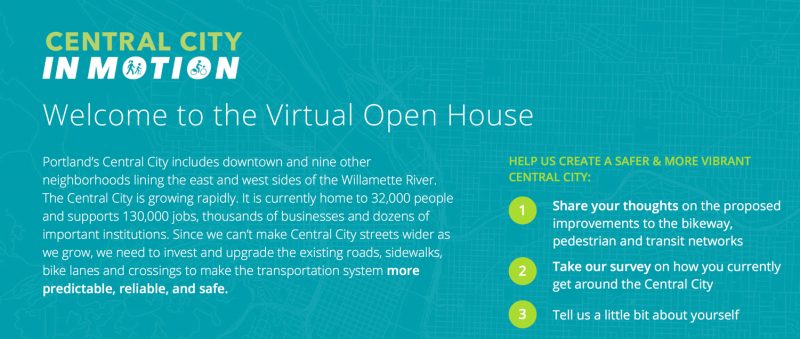
After years of planning and plotting and delays, the Portland Bureau of Transportation is ready for public feedback on their $8.4 million project to update central city streets. Today they launched a virtual open house for their Central City in Motion project.
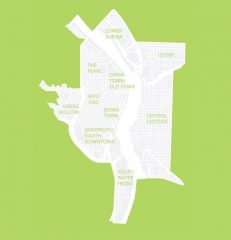
What began as an effort to create a network of protected bikeways downtown and in the nine other neighborhoods that straddle both sides of the Willamette River, the planning has expanded to include a more holistic approach that will aim to make streets safer and more efficient for bike riders, walkers, truck drivers and transit users. “Since we can’t make Central City streets wider as we grow,” reads a statement posted on the virtual open house site, “we need to invest and upgrade the existing roads, sidewalks, bike lanes and crossings to make the transportation system more predictable, reliable, and safe.”
And if you think this is just another planning process that won’t result in anything being built (a very reasonable perspective, given Portland’s history), the CCIM is already funded and PBOT is ready to implement whatever projects come out the other side. As for what projects make the cut…
The city knows not everyone will be happy with the changes required to significantly change how we use our roads. They’ve framed the project in terms of tradeoffs required to make it happen:
“By 2035, the Central City’s population is projected to triple and the number of jobs will increase by 40 percent. Adding lanes to Central City streets would require removing parking or acquiring new right-of-way. Acquiring right-of-way in the constrained, developed Central City isn’t feasible, and removing parking for travel lanes is not consistent with City policy or priorities. Because we need to move more people in the same amount of space, Central City in Motion is focused on improving conditions for people walking, taking transit and biking.”
That line about how removing parking isn’t consistent with city policy is a bit strange. Hope that doesn’t mean parking removal is off the table. We’ve asked for a clarification and will update this story when we hear back. (UPDATE, 8:20 pm: Project Manager Gabe Graff said that line is a mistake: “Yes, sorry for the confusion. This is supposed to say that removing parking for the sake of additional *single occupancy vehicle* travel lanes isn’t supported by Central City policy.”)
There’s also a nifty dial graphic that shows how each type of travel method will be impacted once the streets are redesigned.
Advertisement
The open house then allows people to dive deeper into how the project will impact biking, walking and transit.
On the biking end of things, PBOT’s goal is to identify a network of streets that will, “provide a functional bikeway system that is cohesive, direct, safe, comfortable, and implementable within 5 years.” The open house has a great map tool that allows you to see where existing bikeways are and where they’re being considered.
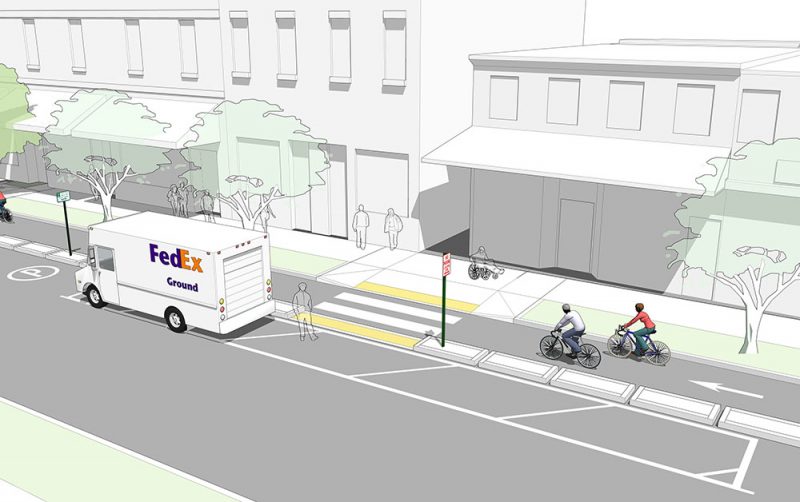
(Source: PBOT)
For walking, the project promises to, “make streets in the Central City safer for walking and rolling by making crossings safer and improving access for people using mobility devices.”
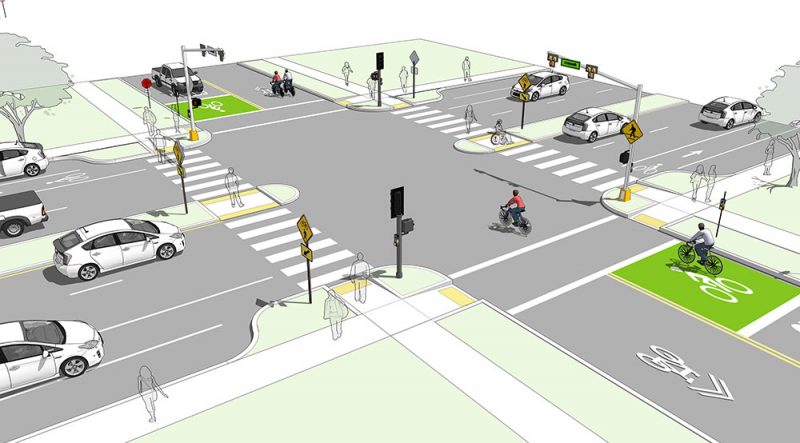
(Source: PBOT)
And for transit users, the city says we can expect the project to, “Identify locations in the Central City where our busiest buses get stuck in traffic and then identify investments that can make taking the bus faster or more reliable.”
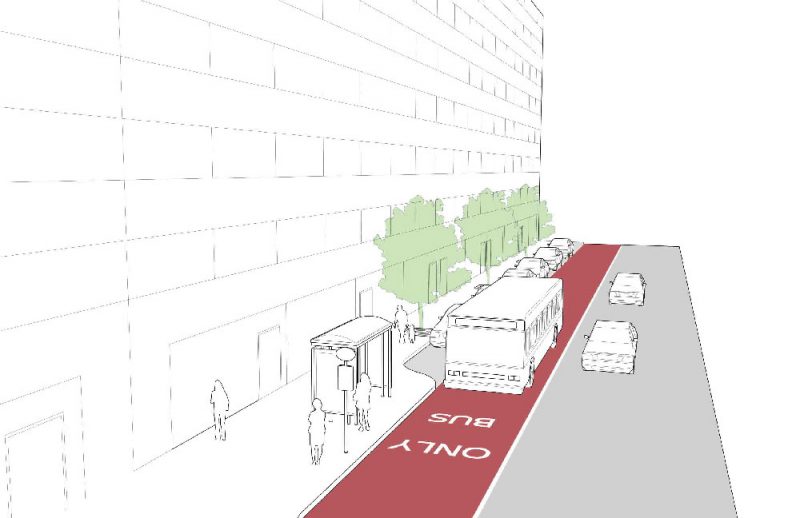
(Source: PBOT)
There’s also a survey that asks questions about how you use the Central City.
Check it out at CentralCityinMotion.com.
— Jonathan Maus: (503) 706-8804, @jonathan_maus on Twitter and jonathan@bikeportland.org
Never miss a story. Sign-up for the daily BP Headlines email.
BikePortland needs your support.


